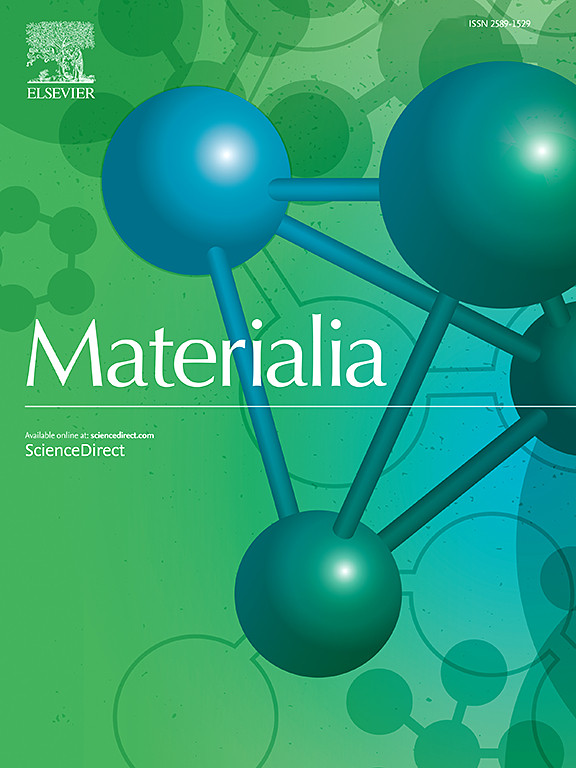Enhanced deformability of TiC in Mo-Ti-C ternary system by off-stoichiometry
IF 3
Q2 MATERIALS SCIENCE, MULTIDISCIPLINARY
引用次数: 0
Abstract
The deformation behavior of B1-type stoichiometric TiC and off-stoichiometric (Ti0.96, Mo0.04)C0.67 was investigated by micropillar compression test utilizing an in situ scanning electron microscope. The yield stress of (Ti0.96, Mo0.04)C0.67 was found to be sufficiently lower than that of the stoichiometric TiC. In addition, the {001}<10>, {110}<10>, and {111}<10> slip systems were identified to be active during the plastic deformation of (Ti0.96, Mo0.04)C0.67. The critical resolved shear stresses of these slip systems decreased in the following order: {110}<10> (5.6 GPa), {001}<10> (5.0 GPa), and {111}<10> (4.4 GPa). In contrast to the stoichiometric TiC, which underwent complete fracture at a relatively early stage of deformation, (Ti0.96, Mo0.04)C0.67 deformed under >10 % plastic strain without fracturing, with crack preferentially initiating along the {001} plane. The findings demonstrate that the off-stoichiometry of (Ti0.96, Mo0.04)C0.67 improves plastic deformability and has a suppressive effect on crack propagation. The enhanced deformability may be attributed to the significantly reduced shear modulus caused by off-stoichiometry.

非化学计量法增强TiC在Mo-Ti-C三元体系中的变形能力
利用原位扫描电镜对b1型化学计量TiC和非化学计量TiC (Ti0.96, Mo0.04)C0.67的变形行为进行了微柱压缩试验研究。(Ti0.96, Mo0.04)C0.67的屈服应力明显低于化学计量TiC的屈服应力。此外,{001}& lt; 11¯0祝辞,{110}& lt; 11¯0祝辞,{111}& lt; 11¯0比;滑移系在(Ti0.96, Mo0.04)C0.67的塑性变形过程中起活跃作用。各滑移体系的临界分解剪应力依次减小:{110}<;11¯0>;(5.6 GPa), {001}<11¯0>;(5.0 GPa), {111}<11¯0>;(4.4绩点)。与化学计量TiC在相对较早的变形阶段发生完全断裂不同,(Ti0.96, Mo0.04)C0.67在>; 10%的塑性应变下发生变形,但未发生断裂,裂纹优先沿{001}面产生。结果表明:(Ti0.96, Mo0.04)C0.67的非化学计量量提高了材料的塑性变形能力,对裂纹扩展有抑制作用;变形能力的增强可能是由于非化学计量引起的剪切模量的显著降低。
本文章由计算机程序翻译,如有差异,请以英文原文为准。
求助全文
约1分钟内获得全文
求助全文
来源期刊

Materialia
MATERIALS SCIENCE, MULTIDISCIPLINARY-
CiteScore
6.40
自引率
2.90%
发文量
345
审稿时长
36 days
期刊介绍:
Materialia is a multidisciplinary journal of materials science and engineering that publishes original peer-reviewed research articles. Articles in Materialia advance the understanding of the relationship between processing, structure, property, and function of materials.
Materialia publishes full-length research articles, review articles, and letters (short communications). In addition to receiving direct submissions, Materialia also accepts transfers from Acta Materialia, Inc. partner journals. Materialia offers authors the choice to publish on an open access model (with author fee), or on a subscription model (with no author fee).
 求助内容:
求助内容: 应助结果提醒方式:
应助结果提醒方式:


